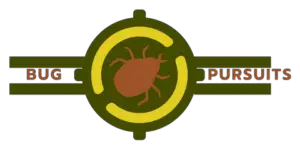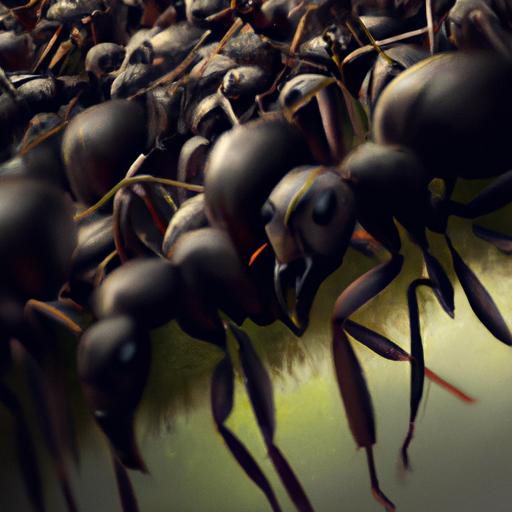When you notice carpenter ants taking up residence in your treasured tree, it’s only natural to be worried.
After all, these ants can cause serious damage to trees if left unchecked.
But don’t panic yet! There are ways to save your tree.
Learn more about what you can do to protect your tree and keep it healthy in the face of a carpenter ant infestation.
Find out here.
Table of Contents
Can A Tree With Carpenter Ants Be Saved?
It is possible to save a tree with carpenter ants, but it requires the right approach and regular maintenance.
First, assess the extent of the infestation.
If it is severe, the tree may need to be removed and replaced.
If it is minor, the tree can be saved with the right treatment.
Start with a thorough inspection.
Look for ant nests and any visible signs of damage.
If the ants are building nests in the tree, remove the nests and treat the tree with an insecticide to reduce the ant population and prevent further infestations.
In addition to insecticides, use traps and baits to catch any remaining ants.
This will reduce their numbers and allow the tree to heal.
Once the tree has recovered, continue with regular maintenance to prevent the ants from returning.
Be aware of the environmental impact of insecticides and baits and use them only when absolutely necessary.
For minor infestations, natural methods such as pruning and removing dead wood may be enough to control the carpenter ants and help the tree to recover.
Saving a tree with carpenter ants requires dedication and regular maintenance.
Identify the extent of the infestation and take the necessary steps to control the ants and allow the tree to heal.
With the right approach, a tree with carpenter ants can be saved.
Can Carpenter Ants Kill A Mature Tree?

Carpenter ants, also known as Camponotus spp.
, are large black ants commonly found in North America.
While they can cause significant damage to wooden structures and trees, they are rarely able to kill a mature tree on their own.
These ants feed on small insects, honeydew, and other sweet substances.
They do not feed on the trees’ tissues, so they are not able to directly cause the death of a mature tree.
However, they can indirectly cause the death of a mature tree by weakening the structure of the tree, making it more susceptible to damage from other insects and diseases.
Carpenter ants are most likely to cause problems when they build their nests inside hollows of trees or in cracks and crevices of the bark.
If the ants are able to establish a large presence in the tree, they can damage the trees’ structure by excavating galleries in the wood and creating tunnels that weaken the tree’s strength and stability.
This can make the tree prone to toppling over during storms, or to succumbing to other diseases or infestations.
In some cases, carpenter ants may also spread wood-destroying fungi within the tree, further deteriorating the tree’s structure and making it more vulnerable to damage.
Ultimately, this can lead to the death of the tree.
Overall, while carpenter ants are not typically able to kill a mature tree on their own, they can weaken it significantly, making it more vulnerable to damage and eventual death from other sources.
It is important to take steps to prevent carpenter ants from infesting trees in order to protect them from potential damage.
What Is The Best Treatment For Carpenter Ants In Trees?
Carpenter ants in trees can be treated in a few different ways, depending on the severity of the infestation.
For minor infestations, mechanical treatments such as pruning dead or dying branches, and wrapping the trunk with a sticky material to trap ants, can be used in conjunction with chemical treatments like insecticides, bait traps, and dusts.
If the infestation is more severe, you may want to consider hiring a professional pest control service to assess the situation and provide the best treatment option.
No matter what treatment you choose, it is important to keep an eye on the tree for any signs of activity.
Regular monitoring and maintenance will help to ensure the carpenter ants are eradicated and don’t return.
Can A Tree Be Saved From Ants?
Yes, a tree can be saved from ants! To achieve this, the species of ant attacking the tree must be identified and the best way to get rid of them must be determined.
If the infestation is mild, physical removal of the ants may be enough.
This can be done by picking them off the tree with tweezers or a vacuum cleaner.
However, if the infestation is more severe, chemical treatments may be required.
Identifying the species of ant is the first step in saving the tree.
Different types of ants exist, and the best way to distinguish them is to take a sample to a pest control professional or entomologist.
After that, the best method of removal needs to be determined.
Physical removal can be a good solution for mild infestations.
It involves picking the ants off the tree with tweezers or a vacuum cleaner.
This should be done as quickly as possible to prevent them from spreading to other parts of the tree.
For more severe infestations, chemical treatments may be necessary.
The type of chemical used will depend on the species of ant and the extent of the infestation.
Common chemical treatments for ants include insecticides, baits, and dusts.
It is essential to follow the instructions on the label carefully and wear protective clothing and masks when applying the chemical.
To sum up, a tree can be saved from ants.
The key is to identify the species of ant and determine the best method of removal.
For mild infestations, physical removal may be enough, while chemical treatments may be required for more severe infestations.
How Do You Kill Carpenter Ants In A Tree Without Killing The Tree?

The best way to get rid of carpenter ants in a tree without killing the tree is to take a targeted approach.
Start by identifying the source of the infestation.
Once you know where the ants are nesting, you can employ a combination of baits and insecticides to exterminate them.
Look for baits containing insecticides specifically designed to target carpenter ants and place them near the infested area and around the base of the tree.
Then, use a targeted insecticide to kill the ants without harming the tree.
If you prefer, you can also use a non-chemical approach, such as using a vacuum cleaner to remove the ants and their nests.
Be sure to dispose of the vacuum bag away from the tree.
With the right approach, you can protect your tree from carpenter ants without compromising its health and safety.
Always follow the instructions carefully and use caution when applying insecticides.
How To Get Rid Of Carpenter Ants In Trees Naturally?
Getting rid of carpenter ants in trees naturally can be a tricky process, but it is definitely possible.
To start, identify the type of tree you have.
Different trees attract different types of ants, so knowing the tree species is key.
After that, inspect your tree for signs of carpenter ants.
Look for sawdust, which is a sure sign of their presence.
If you find any, it’s time to take action.
One natural method for getting rid of carpenter ants is a solution of soap and water.
Mix a few tablespoons of dish soap with a gallon of water and spray the solution directly onto the affected areas of the tree.
This should help to eliminate the ants, as well as any eggs they may have laid.
Another natural remedy is diatomaceous earth.
This is a type of powder made from fossilized algae which is highly effective in killing ants.
Simply sprinkle it around the base of the tree and any other areas where you see signs of the ants.
Finally, it’s important to take preventive measures to ensure that the carpenter ants don’t return.
Keep the area around your tree clean and free of debris.
Trim back any branches that are touching the ground, and remove any dead wood from the tree and its surroundings.
This will help to deter carpenter ants from coming back.
By following these steps, you can naturally get rid of carpenter ants in trees and help keep them away.
With a little bit of effort, you can maintain a healthy, ant-free tree.
What Trees Do Carpenter Ants Like?
Carpenter ants are typically drawn to trees that are decayed or have been damaged by outside forces.
Softwoods such as pine, cedar, and fir trees are the ideal environment for carpenter ants to nest, feed, and reproduce due to their sapwood layers.
However, carpenter ants have also been known to infest hardwood trees like oak and maple.
Other trees such as apple, sourwood, and tulip poplar are also attractive to these ants, especially in moist, warm climates.
In addition to trees, carpenter ants are also fond of wet, rotting wood, as well as any type of wood that has been softened by water damage or other types of decay.
This could include wood from decks, fences, and other wooden structures.
They are also especially attracted to trees that are near a water source.
Moreover, carpenter ants are not limited to trees, but can also be found in wall voids, attics, and other areas of a home or building.
Do Carpenter Ants Kill Trees?

Carpenter ants can cause significant damage to trees, both living and dead.
They are known for their wood-boring habits, tunneling into the wood and creating galleries or tunnels.
Over time, these tunnels can weaken the structure of the tree and eventually cause it to die.
Additionally, carpenter ants feed on tree sap, which can further weaken the tree and make it more susceptible to damage.
They can even spread disease and fungi from tree to tree, making them more vulnerable to attack.
In some cases, the damage done by carpenter ants can be so severe that it can cause the tree to die.
Therefore, it is important to inspect trees regularly for signs of carpenter ant activity and take steps to control the problem before it becomes too severe.
Final Thoughts
It’s possible to save your tree from a carpenter ant infestation, but it takes quick action.
If you notice carpenter ants in your tree, don’t delay.
Follow the steps outlined in this article to protect your tree from the damage of carpenter ants.
With the right plan and dedication, you can save your tree and keep it healthy for years to come.

